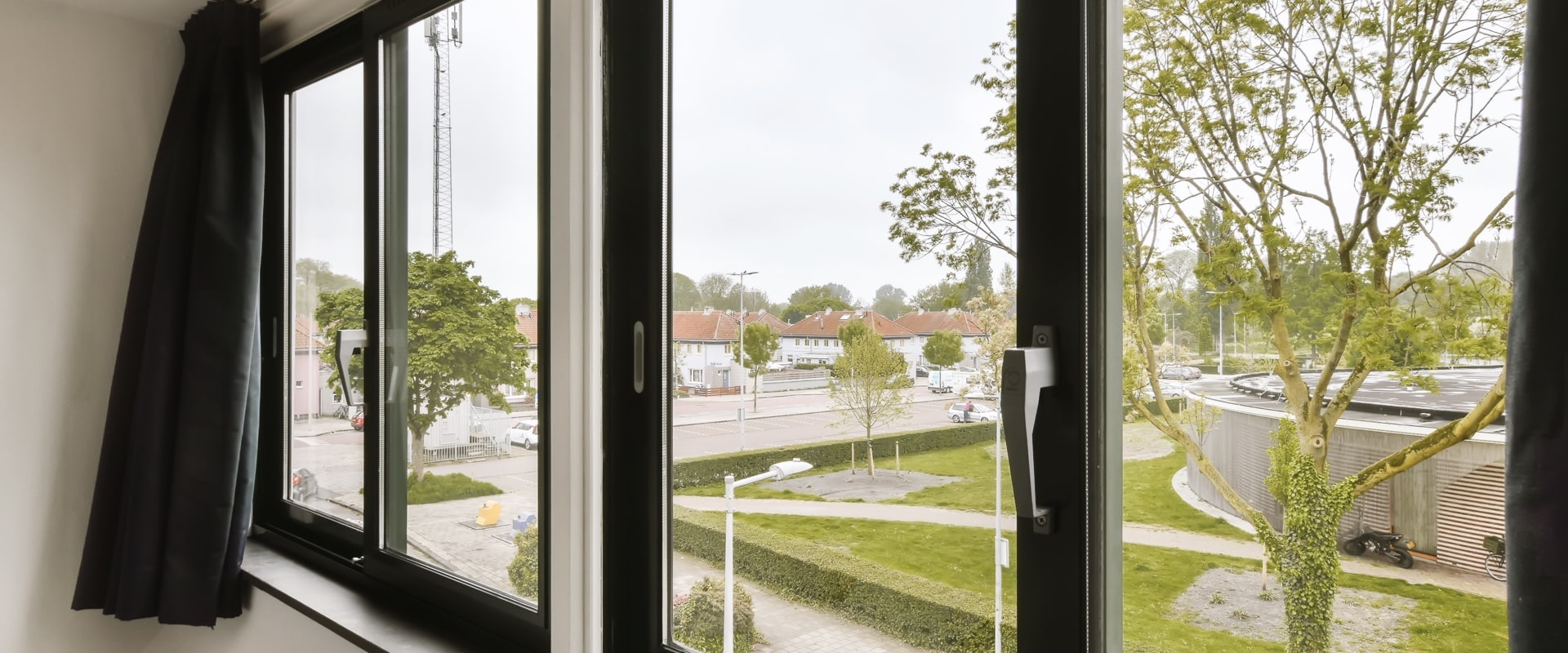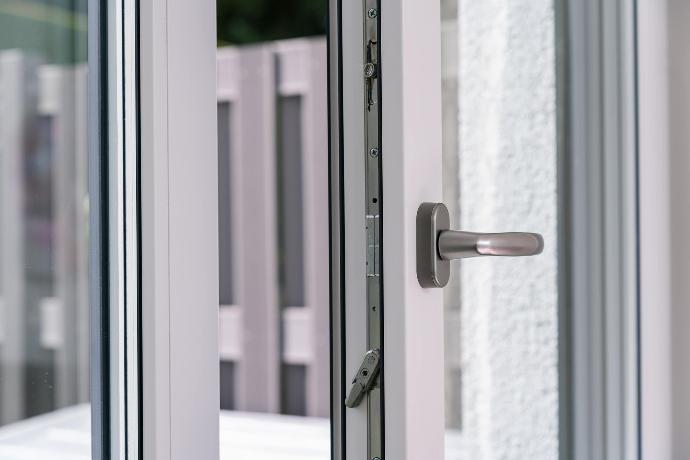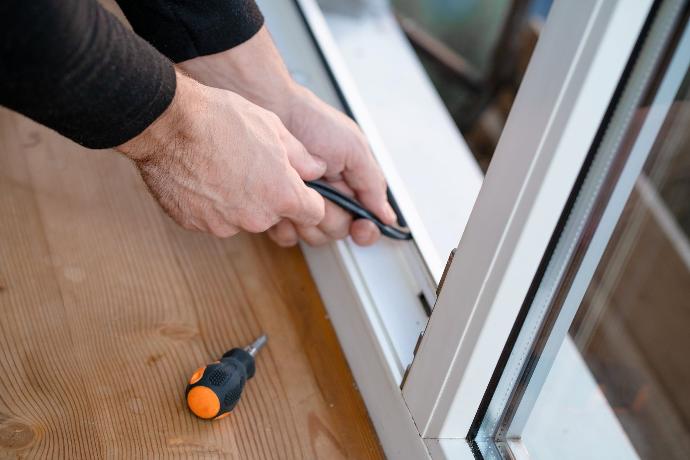 Add My Company
Add My Company

In today's world, energy efficiency is not just a buzzword; it's a necessity for both environmental conservation and reducing household expenses. Windows play an important role in a homes energy performance, often being the weakest link in retaining heat. They are not just architectural elements that provide light, ventilation and aesthetic appeal but are essential components in maintaining the energy balance of your home. Improving their energy efficiency can lead to significant savings on utility bills and a more comfortable living environment.
Before diving into the solutions, it's essential to grasp why windows are pivotal in a homes energy efficiency. Windows can lose heat through direct conduction through the glass or frame, air leakage or the radiation of heat into or out of the home. Addressing these issues is key to improving their efficiency.
Increasing the Energy Efficiency of Your Windows
This comprehensive guide explores various methods to enhance the energy efficiency of your windows, reducing your energy bills and increasing your level of comfort.
Upgrade to Energy-Efficient Windows
Upgrading your windows to more energy-efficient models is one of the most impactful steps in improving your homes energy efficiency. Modern windows are designed with features such as double or triple glazing and low-emissivity (low-E) coatings. These double or triple-pane glazed windows provide a barrier against heat transfer, significantly reducing the amount of heat lost during the winter months. Low-E coatings further enhance these benefits by reflecting infrared light that helps trap heat inside the room.
Modern uPVC glazed window panes are also filled with gasses such as argon and krypton. These gases are used due to their lower thermal conductivity which helps improve the level of insulation offered by the window.

Fit Blinds and Curtains
Additions to your windows such as blinds and curtains serve more than just an aesthetic purpose; they can also enhance a window's energy efficiency. In the colder months, using thick curtains helps trap a layer of air next to the window that provides additional insulation. They also act as a barrier, stopping draughts from entering the room through any gaps around your window frame.
Thermal curtains take this one step further as they are specifically designed to improve a window's insulation. These curtains typically have a layered design, including a dense insulating layer that helps regulate indoor temperatures. Using thermal curtains as part of your window treatment strategy can complement other energy-saving measures, providing a balance between aesthetics and functionality.
The benefits of hanging blinds and curtains can also be felt during the summer. Reflective blinds and light-coloured fabric deflects sunlight and heat, helping to keep your key living areas a cooler temperature.
Seal Air Leaks with Weatherstripping and Window Gaskets
Air leakage around windows is a significant contributor to energy loss. Sealing these leaks, through weather stripping, replacing the window gaskets and caulking, can be cost-effective measures that result in long-term savings and benefits.
Weatherstripping and window gaskets are usually applied to parts of the window that close together, such as between the window and frame. These products help seal gaps, reducing the number of areas where warm air could escape. Over time these seals perish so should be replaced to ensure that your windows provide an effective air and watertight seal. Caulking is often necessary to fill gaps around the edge of the window frame. This achieves the same outcome, filling gaps where cold enter could enter your room.
Regular inspection and maintenance of these seals is necessary as issues can arise when they start to degrade. By ensuring a tight seal you can prevent the loss of conditioned air and reduce the strain on your heating system.

Install Insulation Films on Your Windows
Window films are a versatile solution for improving your energy efficiency. These thin laminates are applied to the glass to reduce the amount of ultraviolet and infrared light that enters your home. They work by trapping a layer of air between the glass and the film, acting as a secondary insulator that keeps the warm air inside. Acting in a similar way to a thermal blanket, window film reduces the amount of heat lost through window panes.
Advancements in technology have created a product that protects your home without significantly reducing visibility or natural light. These films are available in various tints and reflectivity levels, allowing for the selection of a product that meets your needs.
Regular Maintenance
Maintaining the structural integrity and functionality of existing windows is essential. This includes cleaning, checking for damage and ensuring that all windows in your home close properly. Over time, components such as frames and seals can deteriorate, leading to gaps and drafts. Regularly cleaning the tracks and frames, tightening loose components and replacing damaged parts can significantly improve a window's energy efficiency. Well-maintained windows not only improve energy performance but also extend their lifespan.
Professional Energy Audit
A professional energy audit can provide a detailed assessment of your homes energy use, including window efficiency. Energy auditors use specialised tools and techniques to identify areas where energy is being lost and recommend specific improvements. Paying for an energy audit can help prioritise energy-saving measures, ensuring that your investments yield the highest benefits in terms of efficiency and cost savings.
The Importance of Window Seals in Energy Efficiency
One of the most important yet often overlooked aspects of a window's functionality is its seal. Window seals may seem inconsequential but they are key to enhancing a building's energy efficiency, comfort and overall environmental impact.
Window seals are products used to close gaps between the window frame and the glass or between the frame and the building structure. They are typically made from various materials, including rubber, foam or vinyl and are designed to be flexible and durable to fit around the tight bends in your window frame. Their primary function is to create an airtight and watertight barrier, preventing the outside elements from entering and the inside conditioned air from escaping.
The concept of energy efficiency in buildings largely revolves around the optimisation of energy use — maintaining comfortable living conditions while reducing energy consumption and costs. Windows, especially if poorly sealed, can be a significant source of energy loss in both residential and commercial buildings. Here’s how window seals contribute to energy efficiency:
Reducing Heat Loss and Gain
In colder climates, one of the primary concerns is the loss of heat through windows, which can account for a substantial portion of a buildings overall heat loss. This compares to warmer climates where preventing heat gain through windows is equally important. Effective window seals ensure that there is minimal air leakage, maintaining the desired indoor temperature with less reliance on heating or cooling systems. This not only conserves energy but also reduces the amount you are spending on your energy bills.
Preventing Draughts
A draughty window can significantly affect indoor comfort. When cold air infiltrates in the winter or warm air in the summer, your heating system needs to work harder to maintain the set temperature. This results in increased energy use. Properly sealed windows eliminate these drafts, ensuring a consistent and comfortable indoor environment.
Controlling Condensation
Condensation on windows can lead to various problems, including mould growth and wood rot. This moisture issue often arises from temperature differences between the inside and outside surfaces of the window. Good sealing prevents moist air from coming into contact with the cold surface of the glass, thereby reducing condensation and its associated problems.
Enhancing Insulation
Many modern windows have double or triple glazing, with inert gas filled between the panes for better insulation. The effectiveness of these insulating gases depends heavily on the integrity of the window seals. If the seal fails, the gas escapes and the window's insulating properties diminish, leading to increased energy consumption.
Why Should I Make My Windows More Energy Efficient?
Enhancing the energy efficiency of your windows is a multifaceted process, involving everything from upgrades and maintenance to strategic use of window treatments and regular maintenance. Each strategy contributes to reducing your energy consumption, lowering your utility bills and improving indoor comfort. By implementing these measures, you can take a significant step towards a more energy-efficient and sustainable living environment.
Seals Direct is a leading supplier of replacement window seals for uPVC, wooden and Aluminium windows. Our extensive selection of products allows you to purchase a replica of your current glazing gasket. We recommend replacing your seals when they start to perish to maintain the energy efficiency of your room.
For more information on How Can I Make My Windows More Energy Efficient? talk to Seals Direct Ltd

